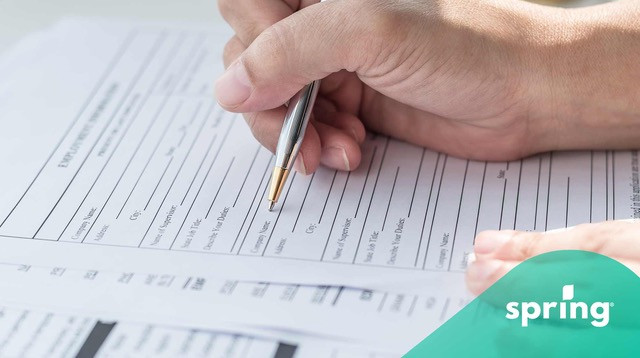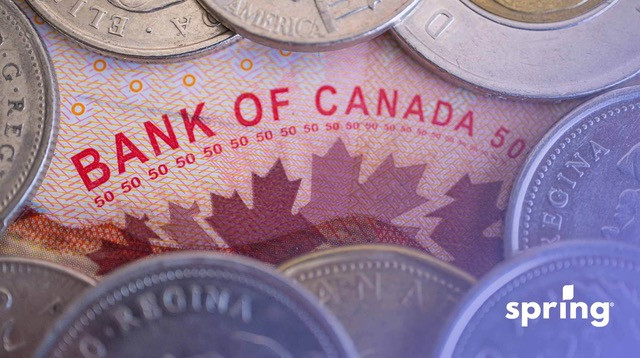Benefits for Families
In Canada, there are quite a few benefits for both low-income and middle-class families that can help boost your monthly income. In order to qualify for them, though, you must meet the eligibility criteria.
Canada Child Benefit
This is a tax-free monthly benefit payment that helps families with the cost of raising children up until the age of 18. In order to qualify for the CCB, you must:
- Live with a child who is under the age of 18
- Be the primary caregiver for the child (children)
- Be a resident of Canada for tax purposes
You can apply online in order to receive the CCB, and once you qualify, you will start receiving benefits. Along with the government CCB benefits, there are also provincial child benefits that you can receive. You don’t need to apply for these provincial benefits; they will automatically be applied for if you qualify. Most of these provincial benefits will be received on the same payment dates as your CCB Payments.
The amount you can receive from the Canada Child Benefit depends on your annual income. The maximum yearly amount families can receive for children under six years of age is $7,997 per child every year ($666.41 every month) for families earning under $37,487 a year. For children aged 6-17 years of age, families in that same income bracket can receive a maximum of $6,748 ($562.33 every month) per child per year. These amounts will be reduced if your adjusted family net income exceeds $37,487.
Maternity and Parental Benefits
When your child is first born, your income drastically reduces when you stay home to care for your new child and adjust to your life. For this reason, the government offers maternity and parental benefits.
With Maternity Benefits, they are only available to one parent who can’t work for one of two reasons: they are pregnant or have recently given birth. Maternity payments are available for up to 15 weeks, and you can get up to a maximum of $695 per week. Once this is up, you could also be eligible for parental benefits.
Parental benefits are available to a parent who has a newborn or has recently adopted a child. The full term of parental leave doesn’t have to be taken consecutively, but it will have to start the week the child is born or adopted. When you apply, you must select between 2 different options: standard parental leave or extended parental leave.
In Canada, standard parental leave lasts for 12 months, and you can earn up to a maximum of $695 per week. The extended parental leave can last for 18 months, and you can earn up to a total of $417.
Benefits for Low-Income Families and Individuals
In Canada, when you make under a certain amount of money, you can get certain benefits from the government that can really help you make ends meet. The CRA not only takes into account your single income but also your family income, also referred to as your adjusted net family income.
GST/HST Credit
This is one of the government credits that you don’t need to apply for. The GST/HST credit is automatically distributed based on your yearly net income. That being said, you do have to complete your yearly tax return in order to get eligible, so you must be at least a Canadian resident for tax purposes.
In order to qualify, you must meet at least one of the following criteria:
- Be at least 19 years of age
- Have (or had) a spouse or common-law partner
- Are (were) a parent and live (lived) with your child
The annual income requirements for this credit are:
- Under $56,181 for a single person
- An income of $74,201 or less for a single person with 4 children
Climate Action Incentive Payment (CAIP)
This is another payment that you would automatically qualify for if you met the requirements. All you needed to do was complete your yearly tax return. It was a tax-free amount that was given to offset the cost of federal pollution pricing.
However, this credit was only available to residents of Alberta, Saskatchewan, Manitoba, New Brunswick, Newfoundland and Labrador, Nova Scotia, Prince Edward Island, and Ontario. This is because the other provinces and territories ran their own climate action programs and their own provincial incentives.
In order to qualify for this credit, you must have:
- Been at least 19 years of age
- Had a spouse or common-law partner
- Were a parent and live (lived) with your child
The benefit amount that you received from the CAIP, also known as the Canada Carbon Rebate, was determined based on your net family income. The last payment was made in April of 2025.
Canada Workers Benefit
The CWB is a refundable tax credit that is meant for those who are low-income and working and just don’t have quite enough money. In order to get the benefit, you must claim it on your tax return. To qualify, you must:
- Earn working income
- Be a Canadian resident
- Be at least 19 years of age
You are not eligible if you are a full-time student. That being said, there are 2 parts to this benefit: the regular benefit and the disability benefit. For the regular benefit, you must make no more than $36,749 as your yearly adjusted net income. As a family, your total income can’t be more than $48,093.
For the disability benefit, your adjusted net income can’t be more than $42,222 as a single person or $59,038 for a family.

Dental Benefits
The Canada Dental Benefit is a fairly new government benefit. This is a benefit intended to lower dental costs for Canadian families with an income of less than $90,000 annually who don’t have any dental coverage. This benefit is currently only available for children who are 12 years of age or older.
How it works is that there are 2 different periods you can claim this benefit, and you are eligible to receive a maximum of two payments. The first benefit period runs from October 1, 2022, until June 30, 2023. The amount you will receive depends on your net family income. Eligible recipients will receive tax-free payments of $260, $390, or $650 per child per period. You do have to apply for this benefit, though; it isn’t automatically given.
Starting in May 2024, Canada launched the Canadian Dental Care Plan. This plan started allowing applications in May of 2024 to those who are between the ages of 65 and 69. Those who are 70 and older should have received instructions on how to apply in March of 2024. In June of 2024, children under 18 years of age and those with Disability Tax Certificates could apply. As of now, it’s open for everyone to apply.
Benefits for Seniors
In addition to the government benefits that are available to seniors. Some of these are available to everyone, while others are given based on income.
Canada Pension Plan
The Canada Pension Plan, also referred to as CPP, is the federal pension program that is meant to replace part of your income when you retire. Once you qualify, you will receive monthly, taxable CPP payments for the rest of your life. In order to qualify, you must:
- Be 60 years old
- Have made at least one valid CPP contribution
A valid CPP contribution can be from working yourself or by receiving credits from a former spouse when the relationship ended.
In order to receive CPP, you must apply. The standard age to start receiving this pension is 65, but you can start receiving it at 60, or you can even wait until you are 70. The amount that you will receive from CPP depends on what you earned throughout your working life.
Old Age Security
The Old Age Security OAS pension is also a monthly pension payment from the government of Canada. You can start receiving this pension payment at age 65. You can also delay OAS payments until you reach the age of 70.
In order to receive your pension, you may have to apply. In some cases, you will get automatically enrolled. The amount that you receive from OAS will depend on your income, as well as how long you worked for and how long you have been a Canadian resident.
Guaranteed Income Supplement
If you receive OAS payments, you may also be eligible for the Guaranteed Income Supplement GIS benefit. In order to be eligible, you must:
- Be at least 65 years old
- Live in Canada
- Receive OAS
- Have an income below the threshold
| Situation | Annual Income Threshold |
| Single, Widowed or Divorced | Less than $22,440 |
| If your spouse receives full OAS | Less than $29,616 |
| If your spouse receives an allowance | Less than $41,472 |
| If your spouse doesn’t get OAS | Less than $53,808 |
Disability Benefits
If you are diagnosed with a permanent disability in Canada, you could be eligible for these tax breaks and benefits. We have listed below the different federal disability credits, but there are also disability programs in the different provinces. Each of these has its own eligibility requirements and payment amounts. They also all have different names. For example, Ontario’s program is called the Ontario Disability Support Program.
Disability Tax Credit
The disability tax credit is for those who have permanent disabilities and impairments who pay less in taxes. The idea behind this is to offset some of the costs related to the impairment. In order to get this tax credit, you do have to apply. Unlike many of the other credits where all you do is fill out a quick application, you do also have to get a physician’s signature for this one.
When applying for this credit, you have the option to apply using digital or paper forms. Along with a physician’s signature, you also need to have a personal application filled out. This can be done at any time during the year, but it will only be reflected when you file your taxes. In some cases, you may end up with some back pay on your income tax refunds as well for years prior.
CPP Disability
CPP disability payments are different from regular CPP payments. In order to qualify, you must:
- Be under the age of 65
- Have made enough CPP contributions
- Have a disability (mental or physical) that stops you from obtaining and maintaining gainful employment
- Be diagnosed with a disability that is considered to be long-term, indefinite or even terminal
If you are approved for CPP disability, once you turn 65, you will then be transferred to CPP.
Along with CPP disability, there are also CPP child disability benefits. In order to receive these, you must be the dependent of someone on CPP disability. The child must be under 18 or between 18 and 25 and enrolled in post-secondary education. In order to receive this benefit, you must apply. This benefit will only back pay for 12 months, so it is best to apply at the same time the person receiving CPP does.
Lastly, there is the CPP disability survivors benefit. This is a payment for the child of someone on CPP who has passed away. They must have made enough contributions for you to be eligible.
All application forms are required to be filled out and submitted with the required documentation. They can either be mailed in or dropped off at Service Canada. You may have to check your local service Canada hours, but they normally keep standard business hours and are closed on statutory holidays.
Child Disability Benefit
The CDB is a monthly tax free payment for those who care for a child that is under 18 years of age and has a mental or physical impairment. In order to receive this benefit, you must already receive Canada Child Benefit payments, and your child must be approved for the disability tax credit. This credit will then be given to you automatically.
The amount that you receive will be based on:
- How many children
- Your adjusted net family income
- Your marital status
Registered Disability Savings Plan
This plan is intended for those who are registered for the disability tax credit. It is intended for parents and others to put money away to help with their financial security. Contributions can be made to it until the recipient turns 59. These contributions are not considered tax-deductible and will not be considered as income once they are dispersed. While this savings plan is technically considered retirement income, its standards are a bit different than other savings plans.
Education Funding Assistance
If you are a student in Canada who has been diagnosed with a disability, you could be approved for government grants. How it works is that you apply with the CRA. You can apply at the same time that you apply for student aid through whichever province or territory you live.
In order to qualify, you must:
- Have a financial need
- Be registered in a qualified program at a designated school
- Are a student with a disability that is recognized by the Canadian Student Financial Assistance Program
- Send in your application along with a document that shows you have a disability
If you are approved for this benefit, then you could receive up to $4000 per year towards your education. You will need to reapply every year to keep receiving the grant, though. They do this because there may be a chance that you no longer qualify.
Employment Insurance
If you are employed but are unable to work due to sickness, lack of work or layoff, the employment insurance program offers financial assistance to get you through until you are able to work again.
With the EI sickness benefits, you can easily apply online through your My Service Canada account. From there, you will need to ask your employer to upload or send in your ROE (record of employment). You can upload this yourself if your employer sends you a copy instead of the CRA.
You will also need a doctor’s note to prove you are unable to work due to sickness or injury. They may also require additional supporting documentation. From there, you should receive approval shortly after. You then have up to 26 weeks of benefits, earning a maximum of $695 per week.
If you are not working due to a seasonal job or lack of work, you could be entitled to regular EI benefits. The application process is the same, but you don’t need a doctor’s note. You are unable to apply as soon as you are off work or up to 4 weeks after. Any later than that, you may not be eligible anymore.
With regular EI benefits, you are eligible as long as:
- You have met the required number of hours in the last year
- Are ready and willing to work
- Were employed with insured employment
- Are actively looking for a job
You are able to stay on EI anywhere from 14 -45 weeks, depending on where you live. You can earn up to 55% of your wage up to a maximum of $695 per week.

Canada Training Credit
This is a refundable tax credit you can apply for to help cover the cost of a training program that you choose to enroll in. In order to qualify, you must:
- File an income tax and benefit return for the year
- Be a resident of Canada for the year
- Have a CTC credit limit of more than $0
- Be between 26 and 66 at the end of the year
- The tuition and fees were eligible for the tuition tax credit
- Turion or other fees were paid to an eligible educational institution
How much you receive for the CTC will depend on what your credit limit for the year is. This limit is shown on your notice of assessment every year. As long as you qualify, your credit limit will go up $250 every year up to a maximum of $5000. Even if you claim your CTC credit one year, you can still accumulate $250 on your tax credit for the following year.
Social Assistance Programs in Canada
In Canada, every province has their own income assistance program. These programs are part of their provincial social services programs. It is provided to eligible individuals who have exhausted their options and have no other form of financial support. While these programs are similar, they differ from province to province.
The different provincial social assistance programs are there to help if you are out of work or just can’t seem to earn enough to cover basic expenses. In some cases, you may not be able to work at all. Others urgently need food, shelter or medical care. Whatever your unique circumstances are, as long as it is evident that you are in financial need. Even though these programs are different and you receive different amounts, they help you meet your basic needs and provide access to health services that you need.
In order to apply for income support through these social development programs, you would have to do so through the province in which you live. In most cases, you can apply through the online link right on the provincial website. Each province will require different supporting documents, but you will need to provide ID for your family, your bank account balance, any income information that you have, and your social insurance number. You will need to prove that you are a Canadian citizen/permanent resident and that you have a need for the funds.
How to Receive Government Benefits
You can receive your government benefits either through a check via mail or through direct deposit. When you apply, do your taxes or register for EI benefits, you are able to submit your banking information and request that your payments be submitted to you this way. You can update your account at any time over the phone or using your My Service Canada account.








